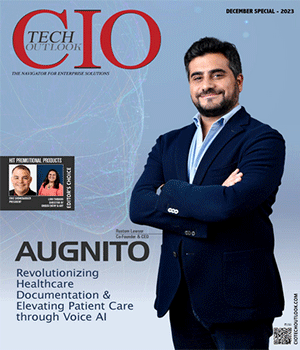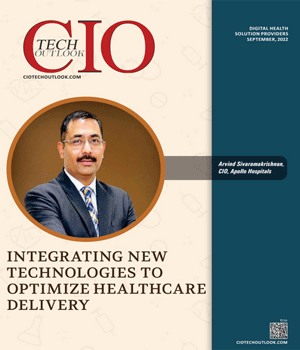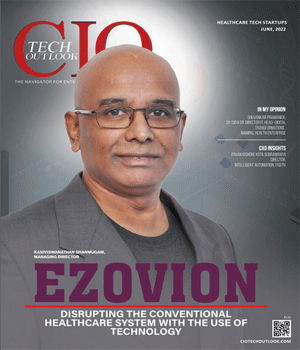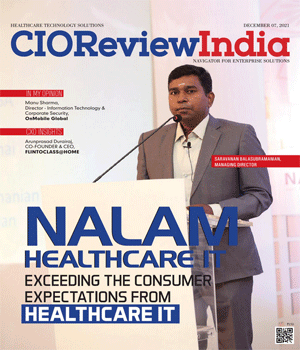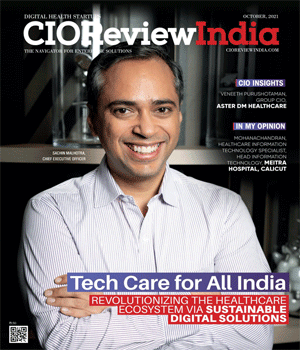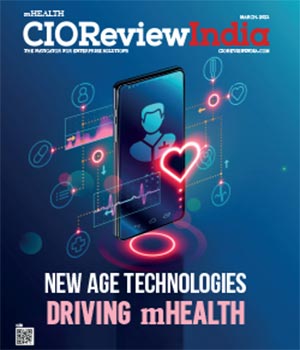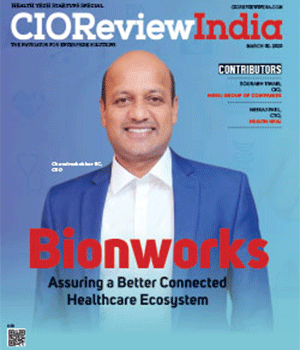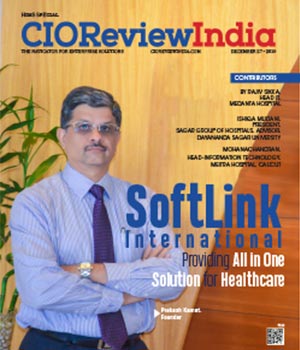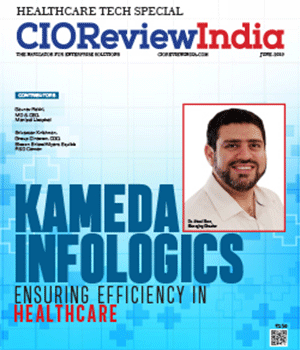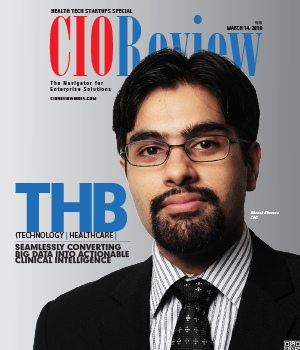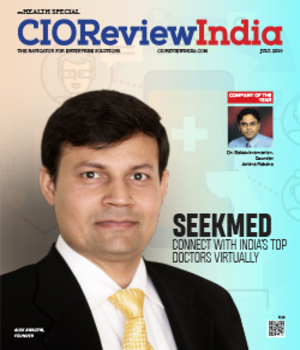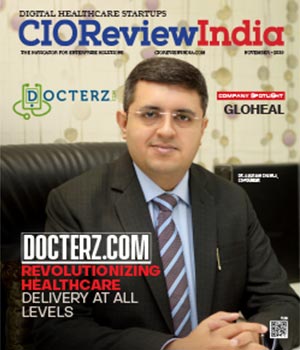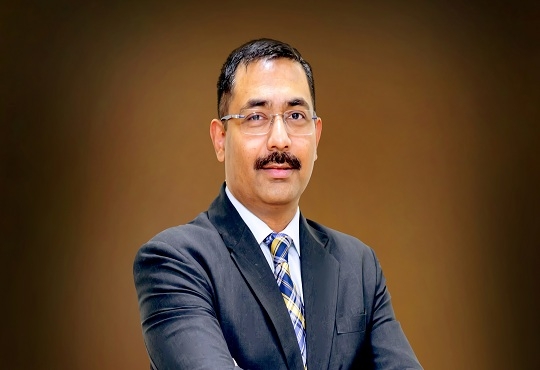
Telemedicine: Revolutionizing the Healthcare Deliverability
Samrat Pradhan | Sunday, 16 May 2021, 17:51 IST

COVID-19 pandemic has made it imperative for healthcare providers to make a concerted effort to increase access and coverage. Aiding in decreasing contact with healthcare facilities, healthcare staff, and patients, in order to minimize the risk of COVID-19, telemedicine has been extensively used during the COVID-19 pandemic. Hence, increasing access to basic healthcare along with improved healthcare quality and patient safety are the major aspects that telemedicine solutions revolve around. According to Grand View research, the global telemedicine market size was estimated at USD 55.9 billion in 2020 and is expected to expand at a compound annual growth rate (CAGR) of 22.4% from 2021 to 2028. Today, due to its remote operations, telemedicine is being seen as one of the most needed approaches towards healthcare deliverability whether it be education, health information or other medical care at a distance. The advancements in technologies, robust patient-centered care and increased access to remote locations are possible due to telemedicine today. Hence, Telemedicine is sure to become the much needed and accepted method of diagnosis and prescription in the coming days.
If we look at the market, it is expected to witness significant growth due to the direct access to healthcare from any given place. Furthermore, telemedicine is categorized into telephonic and visualized access to care, wherein, owing to its benefits such as cost-effective and easy to operate, telephonic care delivery dominated the market. This is further backed by the rising penetration of smartphones and cloud based solutions, rising awareness, and also the introduction of technologically advanced solutions. Due to the increased need of telemedicine by health-care providers, the Medical Council of India has also released practice guidelines in March 2020.
Bridging the Gap between Doctors and Patients
As India is one of the most diversified countries in the world in terms of both area and population, today, there are tens of millions of Indians living in remote corners of the country who don’t have access to proper healthcare systems. They are devoid of basic an amenity due to which, there is a critical challenge when it comes to various health concerns. This fact has made it mandatory to adopt technologies that can bring both people and facilitators together. Using telemedicine, the finest doctors in India can effectively offer their services to patients living at the farthest corners; hence, making telemedicine all the more efficient and effective. Today, one can consult some of the best doctors, irrespective of their geographical presence. Telemedicine has been bridging the gap in India by overcoming the hindrance due to physical distance by offering quality medical care. With all these benefits, telemedicine is here to stay as it assures patients of higher and safer levels of care. Moreover, according to reliable statistics, among all the patients that we enquired, only 15-16 percent of them who were treated via telemedicine found it necessary to visit a hospital for further treatment. Hence, clearly indicating that the effectiveness of telemedicine in treating patients is as high as 85 percent. Especially in the countries like India, telemedicine provides an opportunity to leapfrog many of the challenges faced by existing deficiencies in physical infrastructure; the country is home to masses of talented people but an as-yet underdeveloped physical infrastructure.
Hence, enabling doctors and patients to remotely exchange valid information for diagnosis, treatment and prevention of disease and injuries, research and evaluation, and for the continuing education of health-care providers is urgent. Furthermore, in India, the number of doctors to cater to this population is not equally high. Hence, making it an imperative to adequately and equitably distribute healthcare services. This is where telemedicine has become a solution to the problem that can combat this mismatch and improve the delivery of health-care services using the latest technological advancements. Telemedicine practices in India have slowly and steadily gained a foothold.
Speaking of the cost-effectiveness of Telemedicine, Stephen Agboola, MD at Connected Health once stated, “The evidence supporting the role of telemedicine is strong. Studies have shown that telemedicine promotes continuity of care, decreases the cost of care, and improves patient self-management and overall clinical outcome. Telemedicine can also help in identifying and preventing treatment-related errors between clinic visits. As one example, a number of studies have shown that medication errors can be significantly reduced by telemedicine.”
Telemedicine Offering Invaluable Benefits
Since the last few years, various technological advancements have made delivery of healthcare more accessible, user-friendly and efficient. Today, one can share medical data such as X-Rays and scans, do video consultations, get online prescriptions, among others. The improvements across bandwidth communication speeds, web service back ups, information storage databases, encryption, digitalization, etc., have completely changed the approach when it comes to healthcare deliverability. Furthermore, integrated end-to-end solutions are being utilized by doctors to be virtually present to care and follow-up on remote patients. Today, due to technology, one can collect patient’s real-time vitals, Blood Glucose monitoring, EKG, risk factors, red flags among others. Telemedicine is becoming more effective and cost-effective with the technological upgradation that we’ve been witnessing in the last few years.
Doctors can better manage their patients, while patients can now be monitored at home, with doctors tracking their progress and intervening if needed. Today, healthcare industry players know the convenience and cost-effectiveness of Telemedicine. It has significantly helped in remote monitoring and boosting the overall system efficiency. Also, all the reports can be stored and analyzed, thus enhancing the safety and security outcome of patients at home. This helps in providing a real-time solution with the real-time information available on the platforms. Telemedicine has especially made a significant improvement in primary healthcare.
Also, speaking of the impact of Telemedicine, representatives from eleven private insurers, including Aetna, Humana and Anthem have also stated, “We view telemedicine as an important tool in increasing consumer access to high quality, affordable healthcare, improving patient satisfaction and reducing cost. Given recent advances in technology, telemedicine gives customers a new way to be more engaged in their care, and save time and money. Additionally, telemedicine contributes to the value-based care goals of patient engagement, expanded hours for primary care, population health management and care coordination.”
CIO Viewpoint
Integrating New Technologies to Optimize...
By Abhrasnata Das
Quantum Shift in Healthcare Driven by...
By Abhrasnata Das
Product Adoption: Realizing The Real Value
By Ashish Pandey, CIO, GSK Consumer Healthcare India
CXO Insights
HIT Promotional Products: Fostering Empowerment...
By Eric Shonebarger, President & Lori Thibado, Director of Order Entry & Art
Addressing the Data Management Challenges in...
By Richa Singh
Elevating Patient Experience with Remote...


